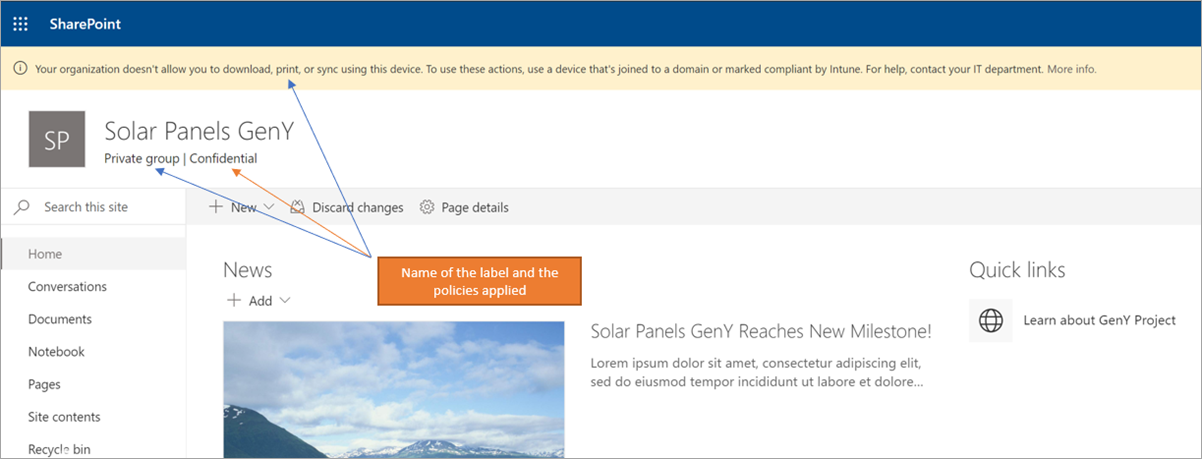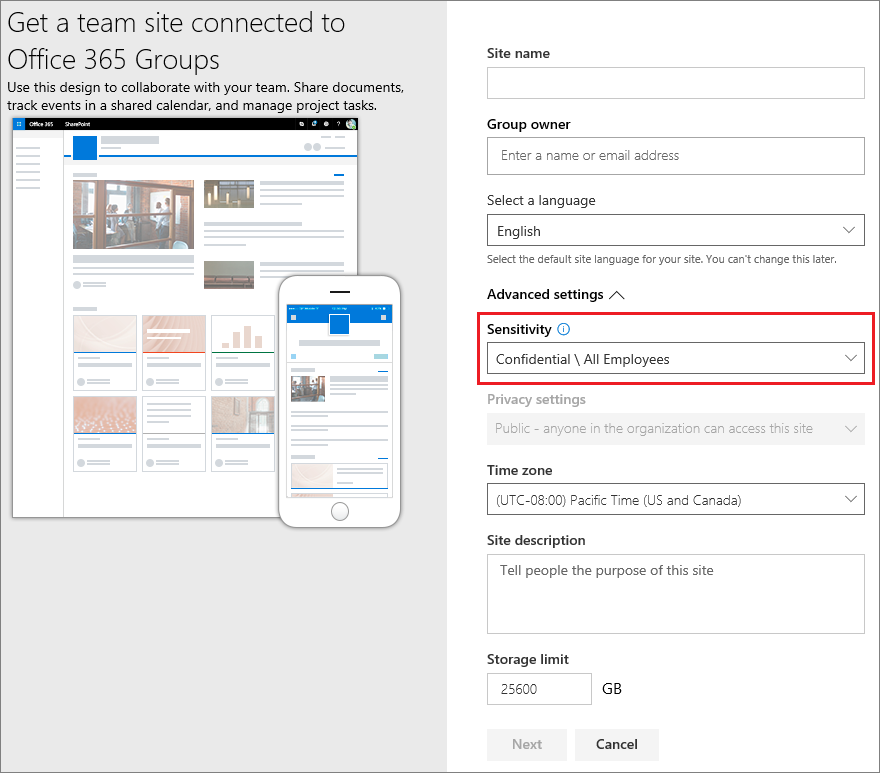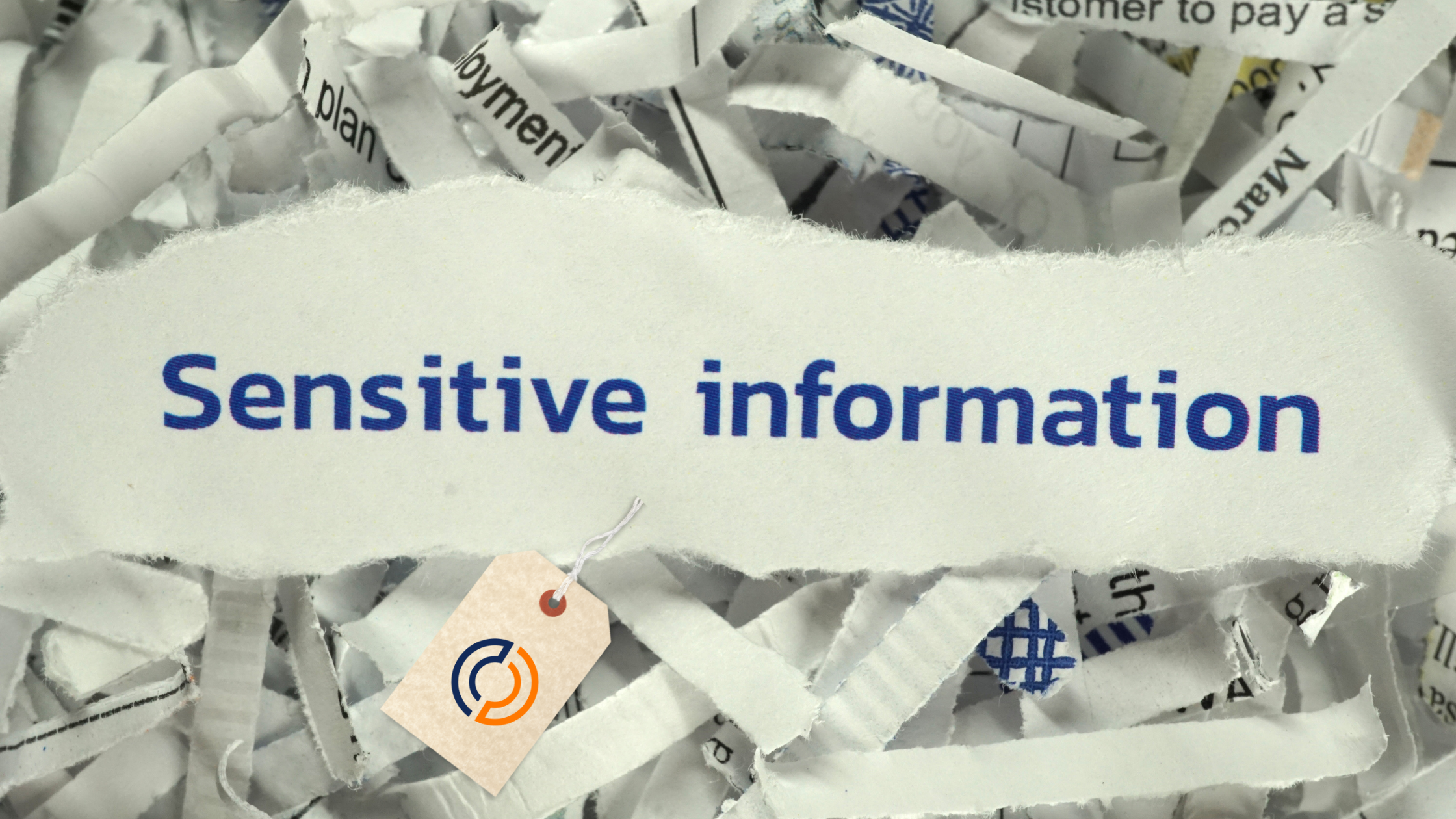Last Updated on July 20, 2023 Sarah Gayda
With growing attention on security and compliance, your organization can leverage Colligo to support sensitivity labels as part of a more comprehensive information protection and collaboration strategy
With volumes of data growing significantly and collaboration central to everyday work, automation as part of the records management and classification process is important to meet company and industry policies without creating friction for your knowledge workers. Colligo helps bridge what the organization needs with what Microsoft provides by empowering users to easily apply labels to Office files to tag content and emails.
What are sensitivity labels?
Sensitivity labels in SharePoint can be used to identify what types of information will be included in a document. SharePoint has a variety of labels that can be applied to items that are to be shared with specific groups of people or to be protected from certain groups of people. Sensitive data may be seen as confidential, private, or secret by your organization. For example, the label “sensitive” would signify that the document contains sensitive information, such as social security numbers or personal contact information.
Fear not, SharePoint sensitivity labels are relatively simple and easy to get up and running with. In a nutshell, when applied to documents, sensitivity labels can protect them from be accessed or read by unauthorized parties. Enabling sensitivity labels ensures your organization’s data cannot fall into the wrong hands. They ensure that user productivity and the ability to collaborate isn’t hindered while doing so and are a part of Microsoft Information Protection solutions.
According to Microsoft, “with sensitivity labels, you can classify data across your organization, and enforce protection settings based on that classification.”

Why should you care about sensitivity labels?
As collaboration in organizations increases, particularly with the proliferation of Microsoft 365 and SharePoint Online (or other cloud content platforms), content is shared both inside and outside your organization (and travels across devices, apps, and services). Your organization still needs this content to be secure and protected for business compliance reasons. SharePoint Online sensitivity labels for Office 365 (Microsoft 365) help with this.
Sensitivity labels can be used in a number of use cases, including: providing protection settings, including encryption and content markings; protecting content in Office apps across different platforms and devices; protecting content in third-party apps and services by using Microsoft Defender for Cloud Apps; protecting containers; extending sensitivity labels to Power BI; and classifying content without using any protection settings, among others.
Records management and information governance policies need to align with the needs of the business, including protecting and securing information in a practical way that makes sense as part of a business process. Leveraging Microsoft’s built in Information Protection, while making it easy for your team to utilize with Colligo, helps enable a more cohesive records management and information governance strategy, protecting your organization from risk and enabling greater compliance.

How does Colligo help with sensitivity labels?
In the world of modern work — whether working from home, from the office, or both — more content and information is shared and collaborated on, and Colligo aims to make the usage of sensitivity labels in Microsoft 365 as fluid as possible. Particularly as more organizations work with employee experience applications, like Microsoft Viva, Colligo helps protect sensitive and confidential information by leveraging sensitivity labels in use to comply with your organization’s policies.
Let’s use an example of a scenario where a critical Board of Directors presentation accidentally gets emailed to the wrong group of employees within your organization. This would cause many problems, including confidential information getting into the wrong hands, which may put your business at risk. However, if proper sensitivity labels were applied, this situation would never have happened in the first place.
Another scenario is a critical strategy document is accidentally saved into a SharePoint library that is accessible by frontline workers. This could be cause for major concern, however, since this document was labelled to be encrypted it is only readable by intended parties who can access that file, and therefore did not pose a risk to the organization.
With Colligo, email attributes are automatically applied and promoted to columns in SharePoint Online to bolster search and discoverability and improve the user experience. Additional security and/or classification labels can also be captured and promoted to columns in SharePoint allowing for additional properties in an email, like sensitivity labels, to be promoted.
How to begin utilizing sensitivity labels
Now that you know you need them, where do you start? Or, if you’re already rolling them out, how can you mature your labelling process to enhance your governance and compliance?
The first step is to ensure you are utilizing retention labels in Microsoft 365.
The basic flow for deploying and applying sensitivity labels
Once your team members or end-users are up and running on sensitivity labels, utilize Colligo’s custom metadata mapping feature in our Email Manager solution and enable Email Header Mapping to make it easy to identify emails and attachments that were protected by a label in Outlook.
Consider two points regarding sensitivity labels
Before you’re off and running, here are two points to keep in mind about sensitivity labels:
- The label applied is stored in clear text in the header of a file or email, which can then be read and utilized for additional protective actions or otherwise.
- Sensitivity labels are persistent, meaning the label or tag travels with the content, regardless of where it’s saved or stored.
The need for sensitivity labels is greater than ever given the renewed global focus on security and compliance and can be part of a comprehensive modern work strategy for your organization. For additional information, please contact us to speak to one of our in-house SharePoint experts.


